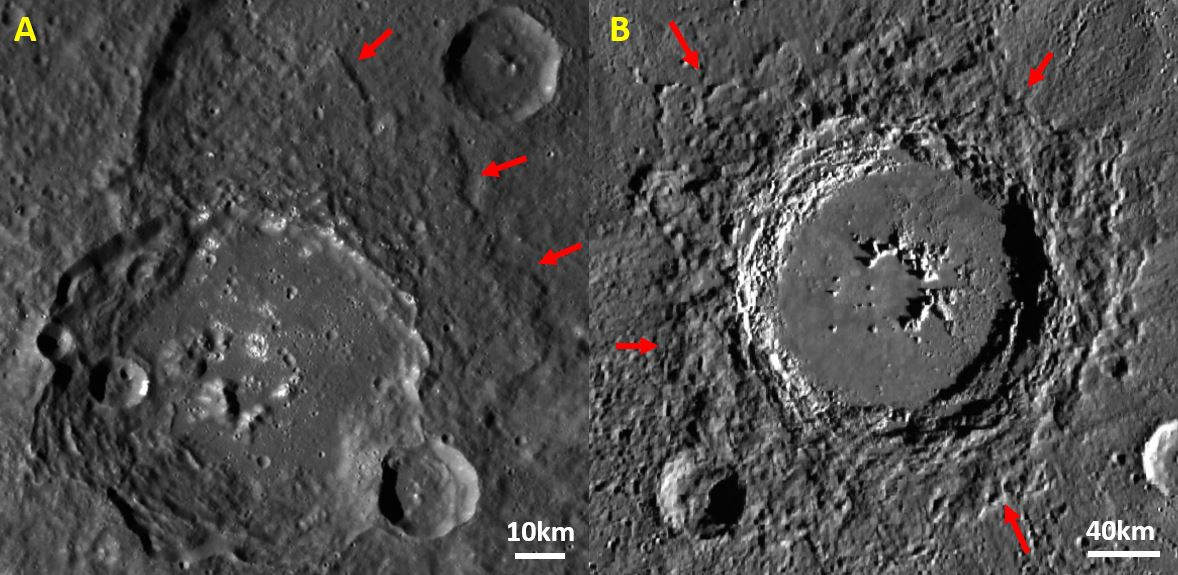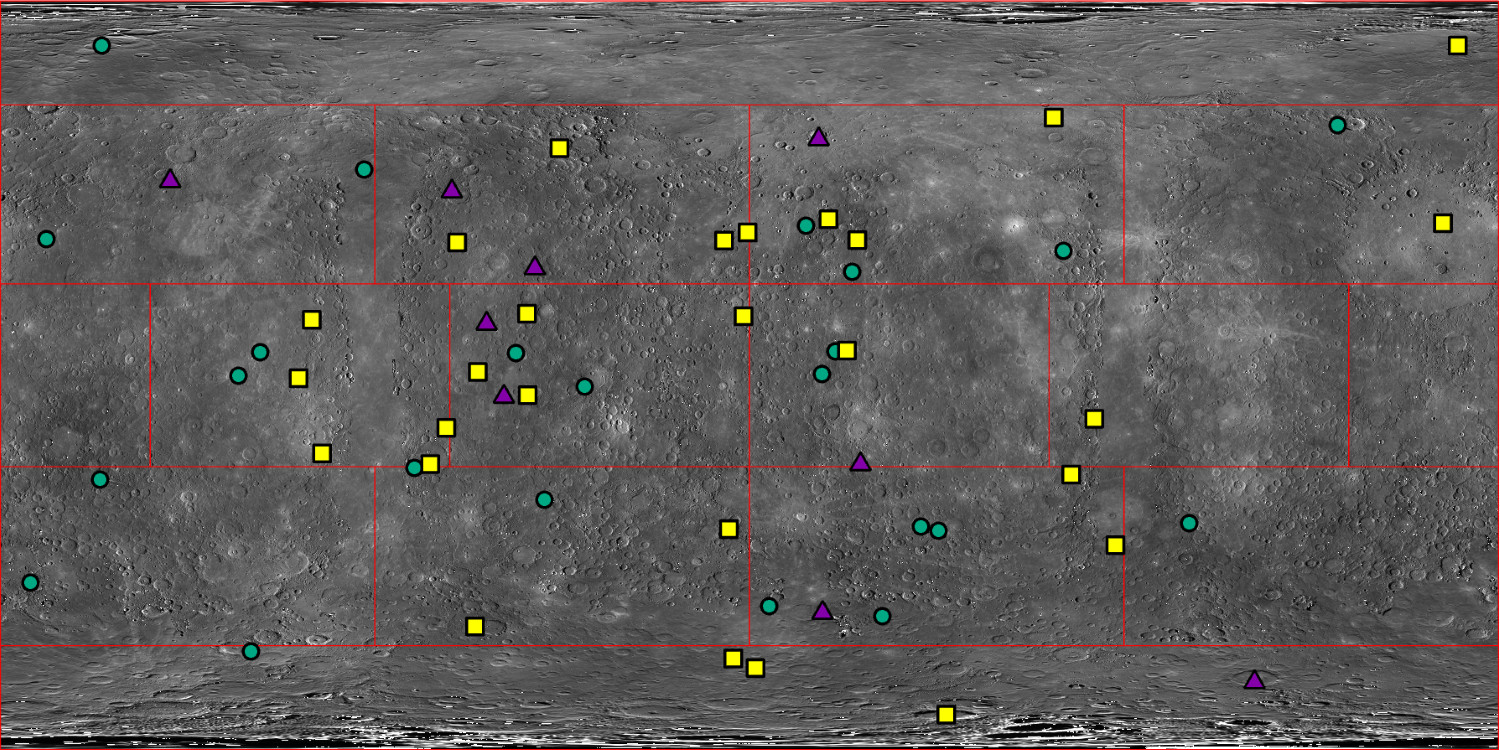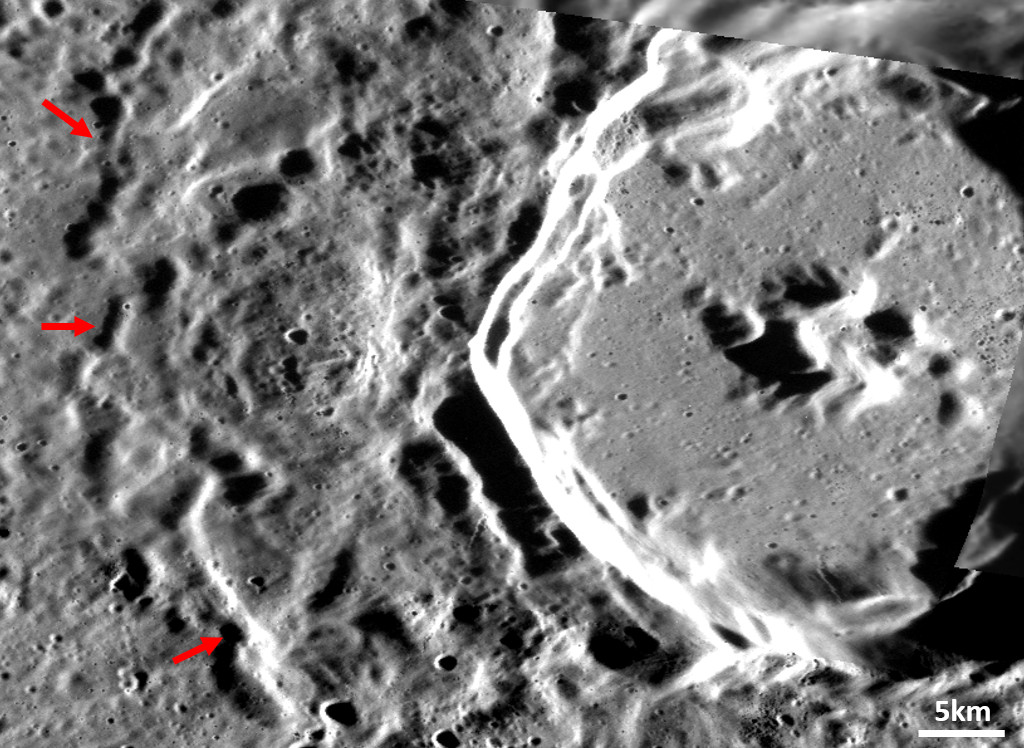A Global Survey of Mercury for Ejecta Flows: Investigating their Origins, Prevalence, and Significance
- 1The Open University, School of Physical Sciences
- 2European Space Agency, ESAC
- 3INAF, Institute for Space Astrophysics and Planetology (IAPS)
Impact ejecta flows are found on rocky planets, and some icy moons. In contrast to ballistically emplaced ejecta, which thins exponentially from crater rims, ejecta flow deposits have a layered morphology with steeper margins, often lobate in shape. This fluidised morphology is thought to result from deposition by ground-hugging flows. For ejecta flows on Mars, the Earth, and some icy satellites, volatiles have been suggested as a possible fluidising agent. Ejecta flows on the Moon however, where volatiles are mostly absent, are likely dry granular flows.
On Mercury, seven ejecta flow deposits were reported by Xiao and Komatsu (2013), described as single layer deposits, extending downslope into adjacent, older craters (Fig 1A). These flows could have occurred during the impact process, or afterwards by mass-wasting. Hokusai crater also has an apparent ejecta flow (Barnouin et al., 2015), but by contrast it occurs on relatively flat ground and does not extend into an adjacent crater (Fig 2A).

Figure 1: Previously reported ejecta flows on Mercury. Image A = Unnamed crater with an ejecta flow extending downslope into an adjacent crater. Reported by Xiao and Komatsu (2013). Image B = Hokusai crater with an ejecta flow on flat ground. Reported by Barnouin et al. (2015). Red arrows indicate flow boundaries.
Here we present a global survey of Mercury identifying 36 craters with ejecta flows and a further 27 probable examples (Fig 2). The majority occur around craters ~30–80 km in diameter and are widespread across the planet. All but two of the ejecta flows appear to extend downslope into adjacent craters or other topographic lows. In addition to Hokusai, an unnamed crater, also on the northern plains, has an ejecta flow on relatively flat ground (<2° slope) and not extending into an adjacent crater (Fig 3). These two flows look distinct from other examples on Mercury, resembling single-layer ejecta craters on Mars, with distal ramparts and a ropey texture. The prevalence of Mercurian ejecta flows shown by this survey is also of note, representing at least a fourfold increase in the number of known flows.

Figure 2: Results of a global survey for ejecta flows. Purple triangles = Previously reported flows. Yellow squares = Flows identified by this survey. Green circles = Probable flows identified by this survey. Image is a monochromatic basemap of Mercury in a simple cylindrical projection. The middle of the image is at 0 degrees longitude, with Mercury quadrangle boundaries shown in red.

Figure 3: Unnamed crater with an ejecta flow on flat ground. Distal ramparts at flow boundaries indicated with red arrows.
As Mercury has volatile-bearing materials at the surface, these could be a factor in ejecta fluidisation. However, we find no evidence for volatile involvement, and features indicative of local volatile concentration (e.g. hollows) don’t occur preferentially near to ejecta flows. Slope of local terrain is clearly a major factor in influencing ejecta flow development on Mercury, since almost all flows extend downslope into adjacent craters. Perhaps some flows are post-impact mass movements, rather than forming during the impact process. However, other work shows that for at least one example, the time of emplacement was contemporaneous with impact (Lennox et al., 2022).
Of the flows on low slopes, Hokusai crater exhibits evidence of excess impact melt: a possible fluidising agent (Barnouin et al., 2015). However, the other crater with a flow on relatively flat ground has no identifiable impact melt present outside the crater rim. The crater is also considerably smaller than Hokusai (~37 km vs 95 km diameter), and smaller craters tend to have proportionally less impact melt. Understanding how this crater’s ejecta flow formed would give insight into the factors influencing ejecta fluidisation on Mercury, as for this crater the slope of local terrain, volatile presence, and impact melt excess do not appear to be obvious factors.
How to cite: Blance, A., Rothery, D., Wright, J., Balme, M., and Galluzzi, V.: A Global Survey of Mercury for Ejecta Flows: Investigating their Origins, Prevalence, and Significance, Europlanet Science Congress 2022, Granada, Spain, 18–23 Sep 2022, EPSC2022-728, https://doi.org/10.5194/epsc2022-728, 2022.

